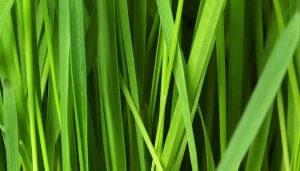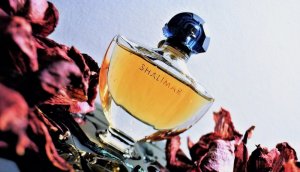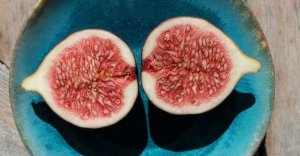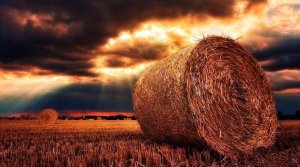Tonka beans are the seeds of a large tree known as the Coumarou that is indigenous to the rainforests of Central and South America. Although highly prized for its hardwood timber, its true claim to fame lies in the intoxicating, complex fragrance of its seeds, which bear enticing notes of milky, deeply sweet vanilla, cherry, tobacco, smoke and hints of cinnamon, soft, bittersweet almond and warm, spicy clove.
Coumarin has been widely used in the flavoring of pipe-tobacco and cigarettes. In the modern world, this sweet odor is almost always associated with tobacco scents. While a tobacco absolute does not contain any significant amount of coumarin, it is often paired with this compound in tobacco accords in perfumes.
What Is Coumarin?
A chemical compound called coumarin is (aka coumarin) found within the seeds of the tonka bean is the source of the tonka bean’s distinctive aroma and bitter taste. Coumarin also occurs naturally in many other plants, including: cassia; cinnamon; vanilla; sweet clover; strawberries; sour cherries; black currant; lavender; licorice and apricots. It is this aromatic amalgam that is the source of the sweet smell of freshly cut grass.

Scientifically speaking, coumarin is a lactone, which is defined as an organic compound containing an amalgam derived from carboxylic acid and alcohol. Lactones used in perfumery are generally known for a fatty, waxy scent that is reminiscent of coconut and milk. Coumarinhas many biological characteristics, including: anti-microbial; anti-viral; anti-inflammatory; antioxidant and enzyme inhibitory properties.
The outer surface of tonka beans is black and wrinkled, but the insides are smooth and brown. About the size of a Brazil nut, these beans have pods that when cracked reveal a thick brown fruit. The aroma that is released from this process is positively intoxicating, and in perfumery is often considered a stand-in for vanilla. Perhaps more correctly, it enhances vanilla as well as fruity and floral scents.
History of The Tonka Bean In The Perfume Industry
No one can say exactly which was the first synthetic material utilized in the making of perfume, but it is known that fractions of essential oils were among the first experimental materials to be isolated from their natural sources. The honor of ‘first’ appears to be a close tie between benzaldehyde and coumarin. In 1820, a man named August Vogel was the very first to isolate coumarin from tonka beans, although he believed it was benzoic acid.
In that same year, a French pharmacist named Nicholas Jean Baptiste Gaston Guibourt discovered Vogel’s error and named the new compound Coumarin. William Henry Perkin, an English chemist was the first to develop this amalgam in a laboratory in 1868. A decade later, he also invented the industrial production of the substance.
It is said in some circles that the modern era in perfume history began in 1884, when the owner and perfumer of Houbigant created Fougére Royale, which is believed to be the very first fragrance to contain synthetic ingredients. Its main accord was comprised of lavender, oak moss and about 10% coumarin. The name of the perfume grew to expand into a large fragrance family known as fougeres. To this day, this category persists, and it is considered to be among the few exclusively masculine genres of scents.
By the 1940s, artificial coumarin, which was one of the first synthetic additives, was readily available and very inexpensive. It took the culinary world by storm and the perfume industry soon followed suit.
Tonka Beans In Gastronomy
British chefs use tonka beans in cocktail syrups and grate their shavings over pastries, while French culinary masters create tonka bean–infused ice creams and custards. The French are so obsessed with the flavor of this bean that they even have a name for it: fièvre tonka, or “tonka fever.”
The Tonka Bean Used In Perfumery
It all began in 1793 when the cumaru fruit was first introduced to the French people. This sensual, vanilla-esque aroma is used in perfume because it both improves the lifetime of the fragrance as well as enhances its diverse notes. It is also widely used as a substitute for musk. Tonka beans are integral to the chemical composition of Guerlain’s iconic scent, Shalimar.

While the foundation of oriental perfumery lies in the pleasing, softly beguiling vanilla scent of the tonka bean, its influence is not exclusive to this aspect. In fact, the warm impact of coumarin can be discerned almost everywhere perfume is created. The popularity of these beans, particularly in masculine and oriental fragrances, lies in their complex, rich aroma and their significant adhesive properties.
The universal appeal of this flavorful bean can be seen (and inhaled) almost everywhere in today’s vast marketplace. They are key ingredients in various consumer sectors concerning gastronomic scents and personal care products, which include: shampoos, lotions, soaps, candles, cosmetics, bubble bath and incense. The Tonka bean is a formidable fragrance ingredient that is both versatile and timeless.
Tonka beans work best in spicy and sweet scents featuring notes that are similar. These include: clove, vanilla, heliotrope, bitter almonds and cinnamon. They also blend well with notes of patchouli, sandalwood, rose, lemon peel and lavender.
Interesting Facts About The Tonka Bean
- The Tonka Bean Is Rumored To Have Mystical Properties
In some cultures, the tonka bean is considered an aphrodisiac, and is used as a “love-wishing bean.” It is also believed to have the power to summon both courage and money. Some pagan cultures believed that crushed tonka beans in herbal tea boost the immune system, help to relieve depression, confusion and negativity.
- Tonka Beans Are A Major Source of Coumarin
According to the BBC, this controversial ingredient is said to be the “most delicious ingredient you never heard of.” Coumarin can be found in cinnamon (cassia), tobacco, e-cigarettes, cosmetics, deodorants, hand soap, shower gels, and detergents.
- The United States Is The Largest Importer of Tonka Beans
Although legally banned in the United States since 1954, it is perfectly legal to add coumarin to tobacco and cosmetics. The United States imports these beans almost exclusively for the tobacco industry.
- The Tonka Bean Has A Potent Fragrance Profile
Just a sprinkle of shavings from this bean is enough to create a rich and memorable aroma. When used in cuisine, some chefs claim that a single tonka bean can flavor as many as 80 dishes.
- Tonka Beans Should Not Be Consumed In Large Quantities
These beans can be highly toxic and even lethal. However, it is estimated that at least 30 entire tonka beans would need to be consumed in order to approach toxic levels, which is about the same volume at which nutmeg and other everyday spices are considered potentially toxic.
- Tonka Beans Have Medicinal And Aroma-therapeutic Qualities
They are known to promote relaxation, reduce anxiety, relieve stress and depression and boost the immune system. Tonka beans were once widely used in medicine as a treatment for cramps, nausea, cough, spasms, and tuberculosis.
- Venezuela, Brazil and Columbia Are The Major Producers Of Tonka Beans
Harvesting these beans has generated income for thousands of South American rural communities situated within diverse forest ecosystems. They serve as a buffer when other jobs are scarce.
- The Tonka Bean Gets Its Name From The Galibi Language
Spoken in an area of French Guyana, the word, tonka, derives from the Galibi (Carib) tongue, which is spoken in French Guiana. The Galibi word, tonquaor tonquin translates to bean. In another language of the same region, tonka is also the name for the tree on which the seeds grow.
- The Tropical Tree Was Originally Cultivated For Its Beautiful Purple Flowers
Each Cumaru tree contains only one tonka bean. Its bark is also known as Brazilian teak. It is an increasingly popular hardwood used for flooring in the United States. It has a very appealing natural color variation and is considered quite durable.
- 90% Of Modern Perfumes Contain Coumarin
This fact can be easily ascertained by reviewing the list of ingredients found on perfume packaging. Experts surmise that every other perfume in the world has more than 1% of coumarin.
A Leading Fragrance Manufacturer And Supplier
We have been a leader and pioneer within the perfume industry for more than seventy years. We are masters at blending essences into an harmonious mélange that becomes altogether a different and singular fragrance. This requires much patience and painstaking research and repeated modifications. It is an artistic accomplishment that cannot be measured within the confines of time.
Our Chief Perfumer, Roger Howell , and a number of our other amazing team member’s efforts were recently featured in a local ABC news piece about the power of scent. Give it watch, or continue reading.
Our superior formulations are the byproducts of meticulous research and cutting edge technologies performed in our 85,000-square-foot Technology Center located in Pittsburgh, Pennsylvania. Our chemists and researchers behind the scenes lie at the heart of our constant state of innovation within the world of industrial science. We always remain on top of industry trends, and our laboratories are equipped with the best state-of-the-art tools that money can buy. These include: gas chromatography, mass spectrometry, head-space analysis, distillation, extraction and quality control technology.
Our one-of-a-kind scents are used for a myriad of products including: superior quality perfumes; scent branding; personal care products; candles and diffusers and fragrances for home products. In addition, we have proven our mettle whenever it comes to translating any company’s vision into fragrance terms that will attract and engage consumers. This requires much patience and painstaking research and repeated modifications.
Alpha Aromatics And The Tonka Bean
We use tonka beans in some of our most iconic fragrances. Below are a few of the most memorable.
- Fresh Rain
Particularly popular in hotels because it evokes contemplation and cleanliness, this scent has psychological undertones as well. It promotes the unspoken promise of a new start, a fresh beginning and washing away of all bad things.
This sweet, fresh, earthy and floral scent is the result of a natural release of plant oils from the soil, bacterial spores and ozone. The top notes also contain tinges of citrus and newly mown hay. Heart notes of strong, sweet lavender, romantic rose and aromatic, peppery sage blend into base notes of earthy musk and woody cedar that finish the fragrance.
- White Tea And Fig
This fruity, citrusy fragrance whispers of white tea and the Orient, and is the signature scent of the Bernic Hotel located in midtown Manhattan. Top notes of sweet fig give way to heart notes of white tea bud, aromatic jasmine and romantic, musky rose. The scent finishes with a base note of cedar, creamy amber and sensual musk. A complex, luxurious and exotic blend, this scent fares well in newer edifices and complexes because it is clean and fresh.

- Cucumber Violet
The combination of a crisp cucumber element and sweetly elusive violet in this natural fragrance is erotically very pleasing to women. Top notes of cucumber, stimulating lemon and fresh air are followed by a middle note of bitter, heavy and spicy pettigrain, green, herbal celery seed, sweet, exotic jasmine and cool, minty spearmint leaves. The scent finishes with a soothing black tea base note.
- Lavender Blossom Honeysuckle
This herbaceous, floral scent begins with a top note of bright, zesty citron, which is also known as the grandfather of citrus. The formulation enfolds a middle note hallmarked by wild and sweet honeysuckle, spicy and musky rose and fresh, sugary lavender blossom. A subtle woody base note completes the fragrance.
- Ocean
The fragrance of the sea is unmistakable, intoxicating and universal, and this scent comes as close to capturing its timeless allure as any other found anywhere. Seaweed, marine life and natural brine all sail on the wings of cool breezes on warm summer days and nights. The perfect scent for resorts and hotels along beaches and waterfronts, its top note is comprised of a sea spray of ozone and invigorating citrus. Middle notes of salty green flow into a base note of mossy sea musk.
- Scensational
Sultry and rich, this scent is marked by top notes of subtle, powdery, sweet-tart pomegranate, fresh, green pear, playful mandarin and dry green palm. Middle notes of tropical, milky coconut and earthy herbal geranium evoke images of sleepy sapphire lagoons and soft summer breezes. The finishing base note lends a masculine aspect to this fragrance with its warm, resinous earthy amber, woody cedar, musky driftwood and mossy green aspects.
- Island Blossom Guava
The allure of exotic and far away realms pervades this tropical floral blend that opens with a top note of dry, aromatic citron, fresh, fruity casaba melon and clean, bright guava. A heart note of sweet, floral and grassy passion flower, exotic jasmine and somewhat sugary and fresh orange blossom follows and blend into a base note of subtle, soothing sandalwood that finishes the scent.
- New Mown Hay (Foin Coupe)
A scent most popular at the turn of the last century, its potency transports users to the French countryside and evokes the distinct fragrance of newly-mown sweet hay, and thus its moniker. Its sweetness is attributed to the presence of coumarin, which is naturally-occurring in spring grass. Considered a model fragrance in the sense that it is pure and unpretentious, this down-home blend of fresh hay notes is brightened by touches of sweet jasmine, citrus and floral and fruity notes.

In Conclusion
The tonka bean is vitally important to the modern perfume industry and is featured and treasured in many iconic scents. Like all things powerful, it must be treated with respect, which means blending it correctly and masterfully in order to be effective. A little goes a long way and our expert perfumers at Alpha Aromatics understand its highly fragrant and controversial power.
Send us a message or call our experts today for help in creating your own tonka bean-based scent.
Final thought on fragrance: Fragrance takes you on a journey of time. You can walk down the street and pass someone and get taken back 20 years. ~Daphne Guinness
This article was created with the insight and direction of our chief perfumer, Roger Howell, our President and CEO, Arnold Zlotnik, and the Alpha perfumery management and staff. Learn more about our company’s mission, our credentialed and degreed perfumers and quality control staff, as well as the passion we pour into our every fragrance creation.
 alpha aromatics®
alpha aromatics®